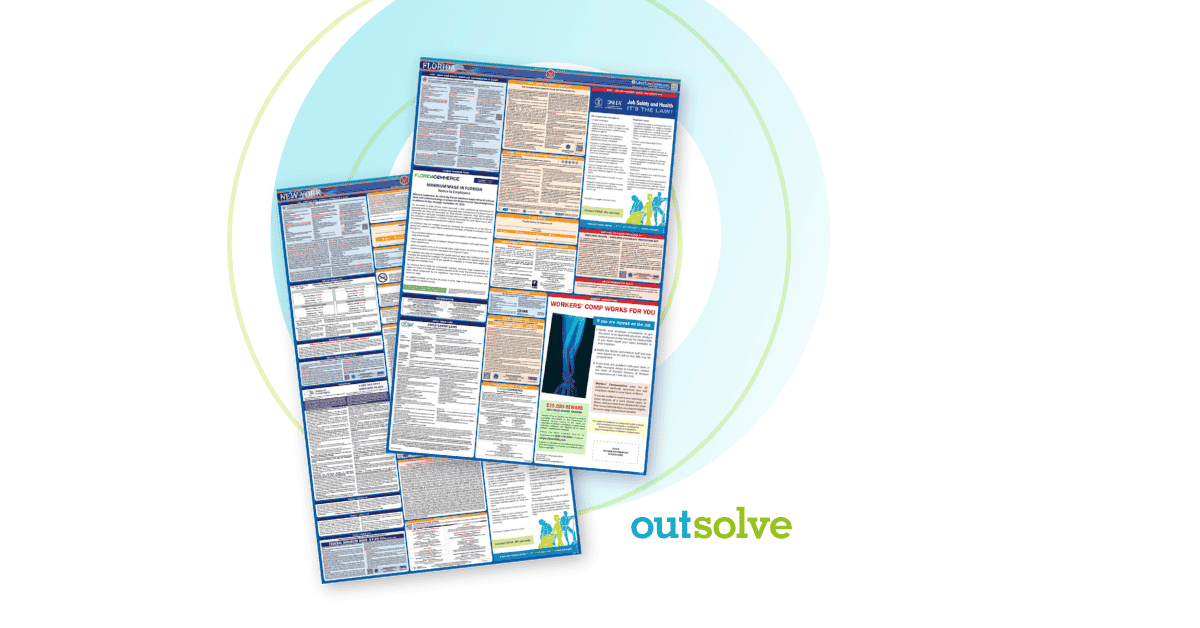5 min read
Compensation Structure: What It Is & Why It Matters
 Nick Jones
:
Feb 20, 2025 10:45:00 AM
Nick Jones
:
Feb 20, 2025 10:45:00 AM

Attracting and retaining top talent is more challenging than ever, and that trend is expected to continue. A competitive and well-thought-out compensation structure can make or break the delicate process of hiring and keeping your best employees. It’s not simply a list of pay scales, but a strategic framework on how employees are compensated that helps promote fairness, competitiveness, and compliance.
Let’s get into the specifics about what a compensation structure is, why it’s important, and how you can build one that is a “win-win” for both your company and your workforce.
What Is a Compensation Structure?
A compensation structure is a framework that employers use to determine employee pay and rewards. It usually includes various elements that create a comprehensive system such as:
- Base salary
- Commissions
- Bonuses
- Benefits
- Other related forms of compensation
This structure ensures that employees are fairly compensated and paid in line with the market, leading to motivated and productive employees that are in sync with the company’s strategic goals and objectives. The responsibility for developing compensation structures is usually a HR function.
Common Types of Compensation Structures:
- Salary bands: This refers to the minimum, midpoint, and maximum pay that a company will pay an employee within a certain job level. Salary bands group jobs by similar roles or job families and assigns a range of pay. When determining salary bands, the role expectations, geography, skills, and market rates are critical factors to consider.
- Job grades: This is a hierarchical structure that groups jobs into levels based on considerations like responsibility, required skills, and experience. As an employee moves up based on performance, merit, or time in the position, they have an opportunity to be promoted to the next job grade.
- Pay scales: These serve as a framework to determine how much employees can earn, considering factors such as job role, experience, and performance.
Regardless of your structure, the goal is for compensation to be equitable, competitive, and aligned with the company’s strategic goals and objectives.
Why Is a Compensation Structure Important?
Having a well-defined compensation structure is a must. Not only does it help ensure fairness amongst employees, but it’s a tool to help motivate teams to meet or exceed goals and milestones that result in employees moving up within the salary structure. Let’s go into more detail about what makes a compensation structure critical:
- Internal and external equity: An effective compensation structure includes both internal and external pay equity. Internal equity ensures that employees are paid similarly when they’re in similar roles with similar responsibilities. External equity ensures that pay is competitive with similar roles in the market. Both internal and external equity are important for attracting and retaining talent and should be part of a company’s overall compensation philosophy.
- Simplifies salary decisions: Salary decisions are more straightforward when a compensation structure exists, as clearly defined pay ranges and job grades exist. This reduces the likelihood of inconsistent salary offers that could become apparent and cause issues for the company down the road. This structure also provides parameters for employee negotiations.
- Syncs compensation with organizational goals and compliance requirements: Compensation structures connect compensation strategies with broader goals of the organization. They also keep your compensation practices compliant with laws and regulations, such as minimum wage laws, equal pay requirements, and other federal, state, or local regulations.
Key Components of a Compensation Structure
A comprehensive compensation structure includes several key components across the company, which provide consistency and fairness. Key components include:
- Job evaluation: Assessing the value of different roles within the organization is step one. Job evaluation is a method used to group similar jobs into job families or levels based on factors like skills, responsibilities, and required experience.
- Pay ranges: Pay ranges are the foundation of most compensation structures. Each role or job grade will have a defined pay range, usually consisting of a minimum, midpoint, and maximum. The minimum is the entry-level pay, the midpoint represents the target salary for a fully experienced employee, and the maximum is the highest salary for that role, often reserved for those with significant experience or exceptional performance.
- Market benchmarking: Market benchmarking compares your company’s pay to the pay offered by similar organizations in the same industry or region. This helps provide a check and balance to make sure that your compensation is competitive and attracts and retains top talent. By aligning your pay with industry standards, you can better position your organization to meet market demands for the longer term.
- Pay philosophy: Pay philosophy is a company’s approach to compensation and defines its place in the market, whether it’s behind, matching, or leading the market. If you lead the market, your pay will be higher than most competitors. If you’re behind, you may pay slightly below market rates, often balancing it out with other benefits or opportunities for advancement. Matching the market means paying at the median level for your industry.
Steps to Develop a Compensation Structure
Creating a compensation structure involves careful planning and analysis. Here is a step-by-step guide:
- Analyze company goals and workforce needs: Before creating a compensation structure, you need to do some workforce planning and define the business needs and strategic goals of your organization. For example, do you need to attract highly skilled technical individuals over the next 5 years, such as engineers or IT professionals? Are you attempting to reduce turnover in mid- management? Once your goals are defined, you can choose your pay philosophy.
- Review job descriptions and conduct market research: Review job descriptions to ensure job responsibilities, skills, and qualifications required for each role are properly defined. Market research helps provide an understanding of what competitors are paying for similar roles. Combining both will give you the data you need to set appropriate pay levels.
- Design salary bands or job grades: Based on the results of a job analysis and market research, HR can build and design salary bands or job grades for each level or job within the organization. This provides employees with a path on how they can progress within the organization and what compensation is available as they continue to grow and excel in their roles.
- Communicate the structure to employees: Effective and clear communication cannot be stressed enough, especially when it comes to any aspect of an employee’s compensation. Transparency is essential to help avoid confusion and helps employees understand how pay decisions are made.
- Regularly review and adjust: The job market and compensation philosophies are constantly changing, so it’s crucial that HR regularly review and adjust the compensation structure in order to stay competitive and compliant. This could mean revising pay ranges, adding new job grades, or adjusting based on market trends or legal considerations.
How a Compensation Structure Aligns with Fair Pay
A key advantage of a compensation structure is its ability to promote pay equity. Pay equity helps ensure that employees who perform the same work are compensated fairly, regardless of factors like gender, race, or other personal characteristics.
It also relies on objective criteria like job responsibilities and market data rather than subjective judgments, which minimizes the risk of unconscious bias and legal risks when it comes to pay decisions. Finally, a transparent structure makes it easier for employees to see how pay decisions are made, which cultivates trust and increases morale and productivity.
Challenges in Implementing a Compensation Structure
A strong compensation structure brings many benefits but implementing one can present some challenges and opportunities. Here are some that HR often face:
- Resistance to change: If the workforce is used to an inconsistent pay system and a culture of “this is how it’s always been done,” then adopting a structured approach could be met with resistance. It’s critical to communicate the rationale and business reasons behind the change, emphasizing the benefits of fairness and clarity. Training and communication on any policy change is suggested as well.
- Balancing internal equity with market competitiveness: Finding just the right balance between paying competitively in the market and maintaining internal equity can be a challenge, especially if longer-standing employees feel their roles are undervalued. Budget and financial constraints can also pose obstacles.
- Adapting to market trends and regulations: Overall compensation philosophies continue to evolve with market conditions, inflation, and regulations that impact pay. Maintaining a structure in a fluid environment can be a challenge, even for the most organized and proactive companies.
What Compensation Structures Mean for your Organization
A thorough compensation structure is not just an option, but rather a necessity for an organization looking to encourage and maintain fairness, competitiveness, and compliance in its pay practices. By defining clear roles, pay ranges, and a transparent pay philosophy, you can ensure that compensation aligns with both your organizational goals and employee needs.
Developing and maintaining a compensation structure is an ongoing process for HR that requires regular evaluation and subsequent adjustments. It’s important that HR stays ahead of changing business needs, new market trends, and legal requirements. At the end of the day, a compensation structure isn’t just about paying your employees. It’s really about being an employer of choice where employees feel valued and rewarded for their contributions.
OutSolve doesn’t just advise—we roll up our sleeves and work alongside you. Whether you’re building your first compensation structure or refining an existing one, we ensure it’s market-competitive, compliant, and aligned with your goals. Let’s tackle it together.
Click the button below to learn more about how OutSolve can help your organization provide fair pay, ensure compliance, and attract top talent.
Nick Jones recently joined OutSolve’s compensation team as an analyst specializing in pay equity and market pay analyses. Nick also supports federal contractors with pay data analytics for OFCCP compliance reviews and state pay reporting. Experienced in interpreting big data, he provides companies with the vital information needed to ensure equity, efficiency, and competitiveness in their compensation. Nick graduated from Tulane University and is currently working on his master’s degree in Data Analytics at the University of New Orleans.
Recent Posts
Related Posts

The Ultimate Guide to Multi-State Labor Law Posters
Human Resources professionals understand how important and challenging it can be to remain updated and compliant with labor laws. This is especially...

Countdown: Final Days of the 90-Day Safe Harbor Period for AAPs
April is here and with that comes the end of the 90-day safe harbor period for federal contractors complying with EO 11246. As April 21, 2025,...

What Triggers an I-9 Audit? Key Factors You Should Know
Verifying proper identity and work authorization documentation for every employee is a crucial HR compliance function - not just for a company’s...



